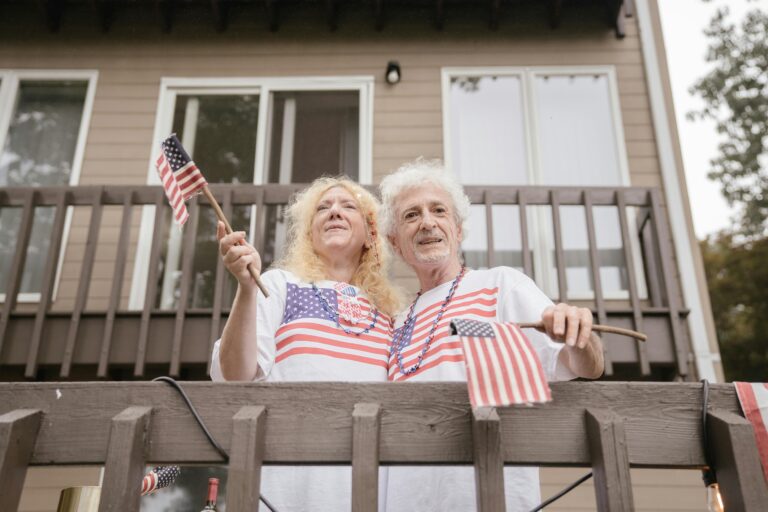
The United States is facing a looming and urgent crisis: a senior housing shortage. As the Baby Boomer generation ages, the number of Americans over 65 is soaring — and the housing market is struggling to keep pace. Experts warn that without major changes, millions of older Americans could find themselves without safe, affordable, and appropriate places to live in the coming decades.
This shortage doesn’t just affect seniors; it has broad implications for families, communities, healthcare systems, and the economy as a whole. Addressing the senior housing gap is becoming one of the most important social challenges of our time.
The Demographic Shift Driving Demand
By 2030, all Baby Boomers — those born between 1946 and 1964 — will be at least 65 years old. According to the U.S. Census Bureau, the senior population is expected to reach over 80 million by 2040, up from about 58 million today. That’s a 40% increase in just 15 years.
This dramatic demographic shift is creating a surge in demand for:
-
Independent senior living communities
-
Assisted living facilities
-
Memory care centers
-
Affordable, age-friendly housing units
However, the current housing stock is woefully unprepared. Many communities lack the infrastructure and availability needed to support aging residents.
The Types of Senior Housing Needed
Senior housing isn’t one-size-fits-all. Different types of housing serve different needs:
-
Independent Living: For seniors who can live on their own but want a community setting with amenities like meal plans, housekeeping, and social activities.
-
Assisted Living: For those who need help with daily activities such as bathing, dressing, and medication management.
-
Memory Care: Specialized facilities for seniors with Alzheimer’s disease or other forms of dementia.
-
Skilled Nursing Facilities (Nursing Homes): Provide medical care and rehabilitation services for seniors with serious health issues.
-
Affordable Senior Housing: Apartments or homes that cater to seniors with low or fixed incomes.
The shortage is evident across all these categories but is especially severe in the affordable and middle-income segments.
Why the Shortage Exists
Several factors contribute to the senior housing shortage:
1. High Construction Costs
Building senior living facilities requires significant investment. These developments must meet specific safety and accessibility standards, which adds to construction costs. Rising labor, material, and regulatory costs have made it harder for developers to justify new projects, especially those targeting low- or middle-income seniors.
2. Zoning and Land Use Restrictions
Many communities have zoning laws that restrict the types of housing that can be built, particularly multifamily or specialized housing like senior living centers. Efforts to build more affordable senior housing often face opposition from local residents concerned about traffic, density, or changes to neighborhood character.
3. Aging in Place Trends
More seniors are choosing to stay in their homes as they age, a trend known as “aging in place.” While this can be beneficial for individuals, it can reduce the turnover of homes that would otherwise be available to younger families or downsizing seniors.
4. Lack of Affordable Options
Luxury senior housing developments have expanded significantly in recent years, catering to wealthy retirees. However, there has been much less investment in affordable and middle-market options. Many seniors living on Social Security or limited pensions simply cannot afford current market rates.
5. Healthcare Needs
Seniors living longer also means many will eventually require more complex care. Facilities offering both independent living and higher levels of care are expensive to build and operate, limiting their availability.
The Impact on Seniors and Families
The shortage has real, human consequences:
-
Cost Burden: Seniors are spending an increasing portion of their income on housing, leaving less for healthcare, food, and other necessities.
-
Homelessness Risk: A growing number of older Americans are experiencing housing insecurity or homelessness, particularly in urban areas.
-
Family Strain: When appropriate housing isn’t available, the burden often falls on family members to provide care, leading to emotional, financial, and physical stress.
-
Health Risks: Inadequate or inappropriate housing can lead to accidents, social isolation, and deteriorating health among seniors.
For many seniors, the absence of accessible and affordable housing options means losing independence and dignity.
Potential Solutions
The senior housing shortage is a complex problem, but there are promising solutions that can help close the gap:
1. Encouraging New Construction
Public-private partnerships can help finance new senior housing developments, especially for lower- and middle-income groups. Government incentives such as tax credits, grants, or low-interest loans can make projects more financially viable.
2. Zoning Reform
Updating zoning laws to allow more multifamily developments, accessory dwelling units (ADUs), and senior-specific housing could make a significant difference. “Missing middle” housing — such as duplexes and townhomes — is ideal for aging adults but is often restricted by local codes.
3. Retrofitting Existing Housing
Making existing homes and apartments more age-friendly (through modifications like no-step entries, wider doorways, and bathroom grab bars) can allow more seniors to age safely in place.
4. Integrated Care Communities
Innovative senior housing models that combine healthcare services with residential living are gaining traction. These allow seniors to transition from independent living to assisted care without needing to relocate.
5. Affordable Housing Initiatives
Expanding programs like the Low-Income Housing Tax Credit (LIHTC) and supporting nonprofit organizations that build affordable senior housing can help address the crisis for the most vulnerable.
6. Employer and Private Sector Involvement
Some companies are exploring ways to offer housing or financial assistance to employees caring for aging family members. Others are investing directly in senior housing projects as a long-term business opportunity.
The Role of Technology
Technology will play a major role in bridging the gap. Smart home technologies, telemedicine, and wearable health devices can enable seniors to live independently longer, reducing demand on assisted living facilities.
At the same time, technology can assist housing providers in delivering more efficient care, reducing costs, and improving quality of life for residents.

A Call to Action
The senior housing shortage is not a distant problem; it is unfolding now, with consequences that will only grow more severe in the coming decade. Policymakers, developers, healthcare providers, and communities must collaborate to create a sustainable framework for senior living.
Solutions must prioritize affordability, accessibility, and dignity. We need a housing ecosystem that allows seniors not just to live, but to thrive — maintaining their independence, health, and connection to the community.
If the U.S. fails to address this challenge, the ripple effects will touch every aspect of society. But with thoughtful planning, innovation, and commitment, we can turn this looming crisis into an opportunity to build a stronger, more compassionate future for all generations.





